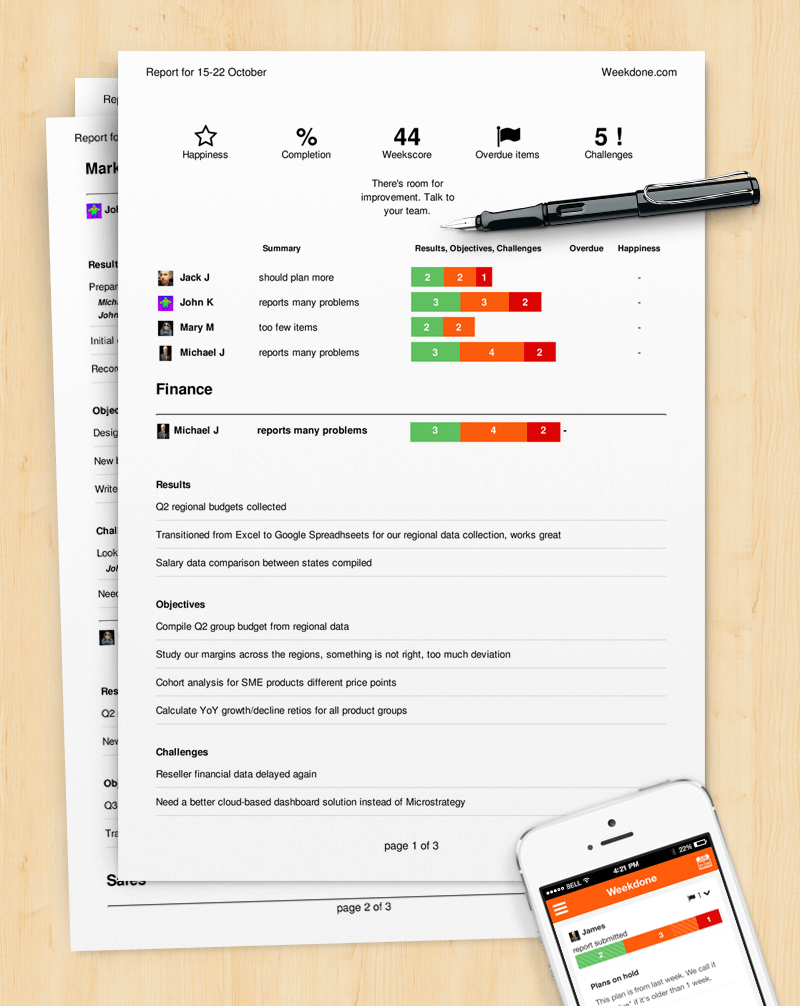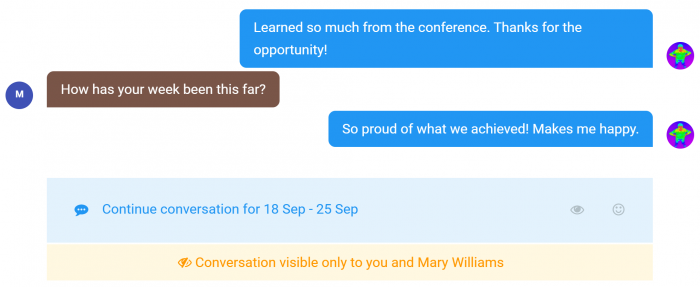How much time are you spending per week on meeting preparation? If you’re like most workers, it’s probably more than you’d like.
The average worker spends approximately 12 hours — more than one-quarter of their 40-hour workweek — preparing for and attending meetings. If this resonates with you and you need help streamlining meeting prep, these tips will teach you everything you need to know.
Preparing for Team Meetings
Before we get into the specifics of effectively and efficiently planning a meeting, let’s touch on the different types of regularly scheduled meetings you and your team might be attending.
The following are common team meetings that might be on your calendar right now:
Weekly Standups
Weekly standups are brief — 10-15 minutes max — group check-ins. During these team meetings, each member will update their peers on progress and what they’ve accomplished over the last week. They also make announcements for shared projects.
Weekly standups help teams to get aligned on their objectives and next steps. They also provide opportunities to address potential stumbling blocks shortly after they happen so timelines can be adjusted as needed.
Weekly standup meetings should be focused and actionable. They give each team member a clear action plan and prevent misunderstandings.
Sprint Planning
For teams that operate according to the Scrum methodology, each project gets broken into time blocks — usually 2-4 weeks — called sprints. Sprint planning meetings give teams a chance to get together and determine which tasks they will address during the next sprint.
Sprint planning meetings are highly collaborative and give every team member a chance to have a say in what happens during the next sprint period. These meetings are important because well-planned sprints make it easier for teams to get their work done on time and prioritize their task list appropriately.
How Does Weekdone Help with Team Meetings?
Team Compass is Weekdone’s team management software that provides users with automated progress reports (and so much more!) These reports are excellent tools because they show what everyone has accomplished and how close they are to being finished. With these reports sent to your inbox at the end of each week, you have a clear idea of the most important points!

Preparing for One-on-Ones
In addition to team meetings, you probably have a bunch of one-on-one meetings on your schedule as well. One-on-ones (or 1:1s) are great for touching base with each team member individually and making sure no one is falling through the cracks.
Discussed below are some examples of one-on-one meetings you might hold:
Performance Reviews
Performance reviews are formal assessments that give a manager or team leader a chance to evaluate a team member’s performance at work. During these meetings, the manager will also work with the team member to identify strengths and weaknesses, offer feedback, and set goals for the future.
Performance reviews are meant to be positive and productive one-on-one meetings. They should help employees see what they’re doing well, how their work aligns with the company’s larger goals, and what they can do to improve moving forward.
Performance reviews also provide team leaders with a chance to recognize top performers, set clear expectations, and address issues early — before they have a chance to escalate.
Individual Problem-Solving
Individual problem-solving meetings are one-on-one meetings designed to address specific problems with an employee.
These are some of the toughest meetings to have. However, they’re also incredibly important and shouldn’t be delayed just because you’re feeling nervous about conflict resolution.
When carried out properly, individual problem-solving meetings create an opportunity to correct issues early. They also give team members a chance to turn things around and navigate the future with more ease and confidence.
Often times, these meetings are a chance to showcase your leadership style and improve connection and trust between yourself and individual team members.
How Does Weekdone Help with One-on-One Meetings?
Weekdone is useful for one-on-one meetings because it lets users easily create and share status updates.
This helps you see clearly what your team members are working on, how much progress they’ve made, and where they might be running into trouble. It nicely complements meeting structures like the PPP framework, too.
Weekdone also provides you with customizable weekly pulse survey templates.

Pulse surveys are regular sets of questions sent to employees to stay informed about their views on various subjects — including their job roles, team communication, and the work environment as a whole. You can review pulse survey responses before 1:1s to get a clear idea of where each employee stands and where they might be struggling.
In Weekdone, leaders and their team members can message each other directly when they feel its necessary to schedule a 1:1, or just to discuss something privately!

1:1 vs Team Meeting Prep
Of course, the meeting preparation process will be different for 1:1s and team meetings. Here are some key differences to keep in mind:
1:1 Meetings
When you’re preparing for one-on-ones, make sure you’re thinking about each employee and their individual needs. You can do this by reviewing their previous status updates and check-ins to get a sense of how they’re performing and where they might be struggling.
While preparing, make a note of how you can recognize each employee during their 1:1, too. If team members feel seen and praised, they’ll have an easier time opening up. This helps them to share more valuable information and insights.
Team Meetings
When you’re preparing for team meetings, you need to consider the entire team. Think about their plans and review their progress. Then, consider how that progress lines up with your Quarterly team goals, or even company level goals.
Agendas are important for all meetings, but they’re especially key for team meetings. They keep everyone on track and ensure the meeting stays as short as possible. Make sure you take the time to draft an agenda and share it with all attendees before the meeting.
Step-by-Step Preparation
Now, let’s get into how to prepare for meetings.
It doesn’t matter if you’re getting ready for a 1:1 meeting or a team meeting. Either way, you can use this short checklist to simplify your meeting prep while still making sure you’re not missing anything important:
✅ Identify the purpose of the meeting.
✅ List decisions that need to be made during the meeting.
✅ Create an agenda with space for note-taking and task assignments.
✅ Select the appropriate meeting attendee or attendees.
✅ Share the agenda and meeting invites with the team or individual team members.
✅ Identify Directly Responsible Individuals to handle each action item (for team meetings).
✅ Follow up and share meeting notes within 24 hours.
Going through these steps and preparing for meetings gets a lot easier — and less time-consuming — when you stay in touch with your team’s weekly status reports.
If you’re regularly checking in with your team members and keeping an eye on what they’re doing, you’ll have a clear idea of what needs to be done and who needs to handle it. This simplifies meeting prep and makes the actual meetings more productive and more enjoyable for everyone involved.
Improve Your Meeting Preparation Today
Preparing well makes all the difference when you’re trying to connect with your team and align your goals:
- Proper planning saves time and makes meetings more efficient.
- Both team meetings and 1:1s require planning for good outcomes.
- Keeping up with your team’s weekly status reports simplifies meeting prep.
- Weekdone Team Compass offers tools like automated progress reports, weekly status reporting, and pulse survey templates to help with meeting planning.
If you need more help preparing for meetings or keeping everyone in the loop, Weekdone is here to help. Stay connected, invite your team to Weekdone Team Compass today!
